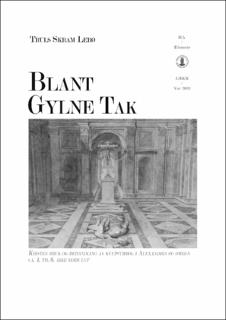| dc.description.abstract | In this thesis I argue that the period of Late Antiquity from the 4th to the 6th centuries CE was a time displaying both marked breaks with the religious past, and great renewal and ingenuity. This is viewed through the lens of cult symbols, both in terms of how they were used and treated. I argue that though many Christians viewed symbols on a wholly different judgement set than their Pagan predecessors and contemporaries, many did not. While theologically and ideologically different, the use and treatment of symbols still operated to a vast degree on the terms of the same world and people with the same outlooks on, and necessities of, life. I argue that while some types of symbols went out of use, others were developed that were functionally equal to their replacements, and so were thus a matter of optics rather than fundamental change. The landscape of Alexandria – culturally, socially, and politically – owed both to the rest of Egypt and to the wider Graeco-Roman world, during this period. Therefore, while I have a tight geographical focus, the scope fluctuates between micro and macro perspectives, both in terms of select individuals versus generalizations of people, and also variations of views on how specific and different types of symbols were used, treated, and deemed to have a worldly efficacy. On the one hand this thesis examines the active socio-political and religious efficacy and use of symbols in the iconoclastic attacks on the temple of Serapis in Alexandria in 392 CE, and the temple of Isis in Menouthis in 486 CE. On the other, a longer temporal perspective is employed in the examination of the development of the shrine of Apa Mena from the 4th century onwards, and how the religious efficacy of symbols used here, was informed and created. I argue that the use and treatment of symbols in these iconoclastic incidents were employed to drain and negate the efficacy of the cult symbols (primarily the statues). The use and treatment of symbols in Apa Mena were viewed differently however, where the efficacy of cult symbols – some new, some old – remained integral for the religious lives of Christians. I argue these different uses and treatments was a result of form, function and (sacred) context. Both pictorial and more “abstract” symbols – like saint’s relics – were deemed not only acceptable in a sacred space like Apa Mena, but wholly natural and necessary. | |
